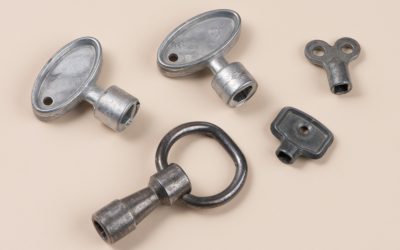While international manufacturing is an exciting frontier for companies looking to reduce costs and increase revenue, it also comes with an unfamiliar supply chain challenge: international shipping. Understanding the shipping process is a vital piece of the puzzle when making an informed decision about what’s best for your company.
At Gabrian, we ship many containers of Asia-manufactured aluminum extrusions, die cast parts, and other products to our customers in the US and Europe every month. And when we work with newer importers, they are sometimes unfamiliar with essential shipping terms like FOB.
In this article, we’ll demystify the Free on Board (FOB) Incoterm and investigate its advantages and disadvantages. We’ll also compare it to the EXW Incoterm, another shipping method our customers sometimes use.
Table of Contents
What is an Incoterm?
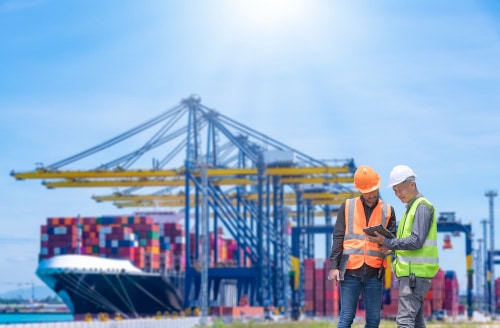
According to the International Trade Administration, an incoterm is one of 11 internationally recognized rules which define the responsibilities of sellers and buyers. It’s a term of sale that specifies which party is responsible for paying for and managing the logistical aspects of shipping.
For example, who is responsible for the shipment itself, insurance, documentation, and customs clearance? In your agreement with the supplier, you’ll use a three-letter acronym (like FOB) to clarify these details.
What is FOB Shipping?
FOB stands for Free on Board. The FOB Incoterm indicates that the seller will be responsible for getting the product to the port. Once the cargo is loaded onto the ship, the risk transfers from the seller to the buyer. The buyer assumes responsibility for the rest of the product’s journey.
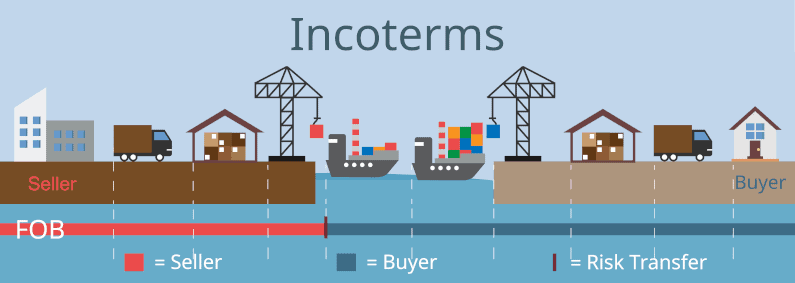
FOB Seller Responsibilities
When using FOB shipping, your supplier is responsible for:
1) Expenses associated with:
- Loading out of the seller’s warehouse.
- Transport costs incurred when moving the cargo from a warehouse or factory to the port.
- Origin terminal handling charges.
2) Ensuring that the cargo is:
- Packaged correctly so that it can be shipped safely.
- Exported correctly through taxes and customs clearance.
- Loaded onto the carriage.
Essentially, the seller pays the costs of moving the cargo from the factory or warehouse to the port from which it will be shipped to the customer.
FOB Buyer Responsibilities
When using FOB shipping, you as the buyer are responsible for:
1) Expenses associated with:
- Shipping the cargo from the port where it was initially loaded to its final destination
- Insurance coverage. While freight insurance is not mandatory under FOB, it is important. If a buyer wants to insure their order, they must do it themselves or specifically negotiate for the seller to do it.
- Customs clearance taxes and fees.
2) Unloading the cargo at the destination.
Essentially, once the cargo has been loaded onto the ship at port, the buyer is responsible for the cost and logistical planning for the rest of the journey.
FOB is Not the Only Incoterm: Learn About EXW
Our customers sometimes choose to use the EXW Incoterm, so let’s talk about what that means and how it compares to FOB.
What is EXW Shipping?
EXW (Ex Works) shipping is an Incoterm that requires the seller only to make the cargo available for the buyer at their warehouse or dock. The buyer must collect the cargo themselves, and assume all responsibility for transporting it to its destination.
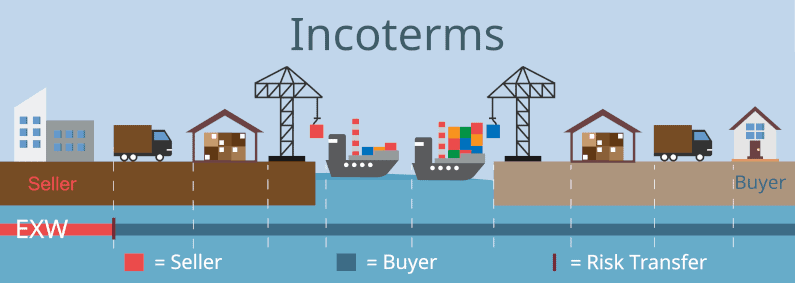
EXW Seller Responsibilities
Seller responsibilities for EXW Incoterms are few. Your supplier is only responsible for ensuring the cargo is properly packaged and ready for export, and that the cargo is available to be picked up from its location by the buyer.
EXW Buyer Responsibilities
The buyer is responsible for nearly everything in EXW shipping, including:
- Loading out the cargo at the pickup location.
- Transporting the cargo to the point of origin.
- Providing all export documentation and covering any charges that arise in customs clearance.
- Loading the cargo onto the carriage, and transporting it from port to port.
- Purchasing insurance, if desired.
- The cost and logistical planning required to unload the shipment at the destination port.
- The cost and logistical planning required to get the cargo to its final destination and unload it there.
FOB vs EXW shipping
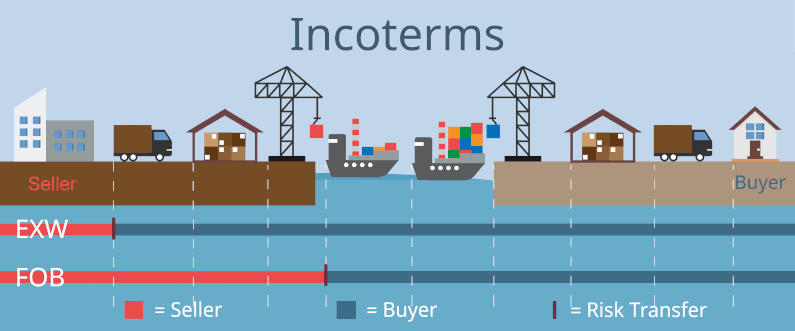
While FOB and EXW shipping can both get your cargo where you want it to go, FOB shipping is the more popular option, especially for newer importers.
EXW might get you a lower price from the seller. This is because the seller does not have to do any work besides making the packaged cargo available for pickup. But with reduced cost comes an increased risk of loss. For inexperienced buyers, the lower price can be offset by expenses that arise from mistakes made in the transportation process.
While FOB shipping costs may initially be higher, it is usually the more cost-effective option. This is because each party’s responsibilities give them control over the cargo while the cargo is in their territory. Buyers and sellers are more familiar with the rules and regulations of transportation in their own countries, so they are less likely to make mistakes.
Have Questions About Your Shipment With Gabrian International?
Gabrian connects you with quality international manufacturers and can offer support as you make decisions about your shipping process. Reach out to discuss your offshore custom aluminum extrusion, die casting, or other project with Gabrian International today.

